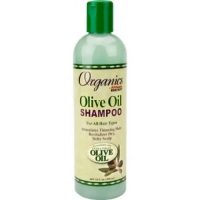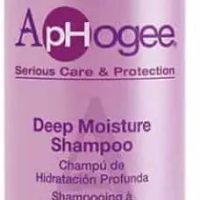News
The Science Behind Dry Shampoo: How Does It Work and Why
Have you ever been in a rush, running late for an important meeting or event, only to realize that your hair looks like it’s been doused in grease?
We’ve all been there, desperately wishing for a quick fix to revive our limp and lifeless locks. Enter dry shampoo – the holy grail of hair care that promises to save us from bad hair days and precious time wasted on washing and styling. But have you ever stopped to wonder how this magical product actually works its wonders?
In this blog post, we’ll unravel the secret behind the science of dry shampoo and dive deep into its inner workings. From absorbing oil and eliminating odors to adding volume and texture, dry shampoo has become a staple in many people’s grooming routines. But what sets it apart from regular shampoo? How does it manage to make our hair look fresh and clean without a drop of water? Join us as we embark on an exploratory journey through the labyrinthine world of dry shampoo.
We’ll delve into the fascinating chemistry behind its formulation and discover the intricate processes that make it a must-have beauty essential. So, if you’ve ever wondered why dry shampoo has become a cult favorite in the realm of hair care, get ready to be amazed by the scientific marvels that lie within this tiny bottle. Let’s uncover the secrets and mysteries of dry shampoo together!
The Basics of Dry Shampoo: What is it and how does it differ from regular shampoo?
Dry shampoo has revolutionized the way we care for our hair. Unlike traditional shampoos that require water and a thorough rinse, dry shampoo offers a quick and convenient solution to refresh our locks on the go. But what exactly is dry shampoo, and how does it differ from its liquid counterpart?
Dry shampoo is a powder or aerosol-based product that helps absorb excess oil and grease from the scalp and hair strands. It comes in various formulations, including powders, sprays, foams, and even mousse-like textures. Unlike regular shampoos that rely on water to cleanse the hair, dry shampoo works by absorbing oil and dirt particles, leaving your hair looking clean and refreshed.
One of the key differences between dry shampoo and regular shampoo is their cleansing mechanism. Traditional shampoos contain surfactants that create lather when mixed with water. These surfactants bind to dirt, oil, and other impurities in your hair, allowing them to be rinsed away.
Dry shampoos, on the other hand, use ingredients like starches or clays to absorb excess oil from your scalp and hair. These powders work by adhering to the oils on your scalp and hair strands, effectively soaking up the grease without water. The result is instantly refreshed hair that looks cleaner and less greasy.
Absorbing Oil: How does dry shampoo eliminate greasy hair without water?
Greasy hair can be a major confidence killer. Thankfully, dry shampoo offers a quick fix for those days when washing your hair just isn’t an option. But how exactly does it eliminate greasiness without using any water?
The secret lies in the formulation of dry shampoo. Most dry shampoos contain absorbent ingredients such as rice starch, cornstarch, or talc. These powders have a high affinity for oil and can effectively soak up excess sebum from your scalp and hair.
When you apply dry shampoo to your roots or oily areas, the powder particles adhere to the oils on your scalp and hair strands. As a result, the oils are absorbed by the powder, leaving your hair looking fresh and less greasy.
Additionally, dry shampoos often contain ingredients like silica or kaolin clay, which help to further absorb oil and add volume to your hair. These ingredients work by creating space between individual hair strands, giving the appearance of fuller and more voluminous hair.
The Science of Odor Elimination: How does dry shampoo neutralize unwanted smells in the hair?
Aside from eliminating greasiness, dry shampoo also helps neutralize unwanted odors that can accumulate in our hair over time. But how does it manage to keep our locks smelling fresh without water?
Dry shampoos often contain fragrance additives that help mask unpleasant odors in the hair. These fragrances work by releasing pleasant scents that overpower any unwanted smells.
In addition to fragrance additives, some dry shampoos also contain odor-neutralizing agents such as baking soda or activated charcoal. These ingredients have the ability to absorb and trap odor-causing molecules, effectively eliminating any unpleasant smells in your hair.
By using a combination of fragrance additives and odor-neutralizing agents, dry shampoo helps keep your hair smelling clean and fresh throughout the day.
Adding Volume and Texture: How does dry shampoo give your hair a boost?
Dry shampoo not only helps combat greasiness but also adds volume and texture to your tresses. If you’re looking to achieve that coveted “bedhead” or “beachy waves” look, dry shampoo can be your secret weapon.
When applied to the roots of your hair, dry shampoo creates a slight buildup of product. This buildup helps create friction between the hair strands, resulting in added volume and texture.
Additionally, the absorbent powders in dry shampoo have a mattifying effect on the hair. This means that they can help reduce shine and give your hair a more textured appearance. By spraying or applying dry shampoo throughout your hair, you can achieve a tousled and lived-in look without any additional styling products.
Understanding the Ingredients: What are the key components of dry shampoo and how do they work?
Dry shampoos contain a variety of ingredients that work together to refresh and revive your hair. Let’s take a closer look at some of these key components and how they contribute to the effectiveness of dry shampoo.
Absorbent Powders: As mentioned earlier, absorbent powders such as rice starch, cornstarch, or talc are responsible for soaking up excess oil from your scalp and hair. These powders adhere to the oils on your scalp and absorb them, leaving your hair looking cleaner and less greasy.
Fragrance Additives: To keep your hair smelling fresh, many dry shampoos contain fragrance additives. These additives release pleasant scents that help mask any unwanted odors in your hair.
Odor-Neutralizing Agents: Some dry shampoos also include odor-neutralizing agents like baking soda or activated charcoal. These ingredients have the ability to absorb odor-causing molecules, effectively eliminating any unpleasant smells in your hair.
Volumizing Agents: Dry shampoos often contain ingredients that help add volume and texture to your hair. These agents create a slight buildup of product at the roots, resulting in added volume and a more textured appearance.
By combining these ingredients, dry shampoo offers a multi-faceted approach to hair care, addressing issues such as greasiness, odor, and lack of volume.
Aerosol vs. Powder Formulations: Exploring the different types of dry shampoo and their pros and cons.
Dry shampoos come in various formulations, including aerosols and powders. Each formulation has its own set of pros and cons, catering to different hair types and personal preferences.
Aerosol dry shampoos are typically sprayed directly onto the roots or oily areas of the hair. They often come in pressurized cans that release a fine mist of product. Aerosol dry shampoos are known for their convenience and ease of application. They distribute the product evenly throughout the hair, making it easier to achieve a refreshed look.
Powder dry shampoos, on the other hand, come in loose or compact form. They need to be applied by sprinkling or dusting the powder onto the roots or oily areas. Powder dry shampoos are often preferred by those with fine or thin hair as they provide more control over where the product is applied. Additionally, powder formulations tend to have less residue compared to aerosols.
When choosing between aerosol and powder dry shampoos, consider factors such as your hair type, desired level of control during application, and personal preference for residue-free results.
Common Mistakes to Avoid: Tips and tricks for using dry shampoo effectively.
While dry shampoo can be a game-changer in your hair care routine, it’s important to use it correctly to achieve the best results. Here are some common mistakes to avoid when using dry shampoo:
1. Using Too Much Product: Applying an excessive amount of dry shampoo can leave a visible residue in your hair. Start with a small amount and gradually add more if needed.
2. Applying Incorrectly: To effectively absorb oil, apply dry shampoo directly to the roots or oily areas of your hair. Hold the can or bottle about 6-8 inches away from your head and spray or sprinkle evenly.
3. Not Brushing Out: After applying dry shampoo, use a brush or your fingers to distribute the product evenly throughout your hair. This helps prevent any visible residue and ensures that the product is absorbed properly.
4. Overusing: While dry shampoo is a great quick fix, it’s not meant to replace regular washing and cleansing of your hair. Overusing dry shampoo can lead to product buildup and scalp issues.
By avoiding these common mistakes, you can make the most out of your dry shampoo and enjoy fresh-looking hair between washes.
The Future of Dry Shampoo: Innovations and advancements in the world of hair care
The world of hair care is constantly evolving, and dry shampoos are no exception. As technology advances and consumer demands change, we can expect to see innovative developments in the realm of dry shampoos.
One area of focus for future advancements is sustainability. Many brands are exploring eco-friendly alternatives for packaging and formulation, aiming to reduce their environmental impact without compromising on performance.
Additionally, there is growing interest in creating specialized dry shampoos for different hair types and concerns. From formulas designed specifically for curly or color-treated hair to products that address scalp issues like dandruff or itchiness, the future of dry shampoo holds exciting possibilities.
Furthermore, advancements in formulation technology may lead to even more effective and efficient dry shampoos. Scientists are constantly researching and experimenting with new ingredients and delivery systems to enhance the performance of these products.
As the demand for convenient hair care solutions continues to rise, we can expect dry shampoos to remain a staple in our beauty routines. With ongoing innovations and advancements, the future of dry shampoo looks promising.
Myth Busting: Addressing common misconceptions about dry shampoo
Dry shampoo has gained immense popularity over the years, but along with its fame comes a fair share of misconceptions. Let’s debunk some common myths surrounding dry shampoo:
1. Dry Shampoo Cleanses Hair: While dry shampoo can absorb excess oil and make your hair look cleaner, it doesn’t actually cleanse your hair like traditional shampoos. It’s important to use regular shampoo and water to properly cleanse your scalp and remove any buildup.
2. Dry Shampoo Causes Hair Loss: There is no scientific evidence to suggest that using dry shampoo leads to hair loss. However, excessive use or improper application of any product can potentially damage your hair or scalp.
3. Dry Shampoo is Suitable for All Hair Types: While dry shampoo can be beneficial for many people, it may not work well for everyone. Those with very dry or brittle hair may find that it further dries out their strands or causes breakage.
4. Dry Shampoo Replaces Regular Washing: Dry shampoo is meant to be a temporary solution between washes, not a replacement for regular cleansing. It’s important to maintain a proper hair care routine that includes regular washing with water and traditional shampoos.
By dispelling these myths, we can better understand the true benefits and limitations of dry shampoo.
The magic of dry shampoo – a scientific revolution in hair care
Dry shampoo has undoubtedly transformed the way we care for our hair. Its ability to refresh and revive our locks without water has made it a staple in many people’s grooming routines. But behind its seemingly magical powers lies a world of science and innovation.
From absorbing oil and eliminating odors to adding volume and texture, dry shampoo offers a multitude of benefits. Its unique formulation, featuring absorbent powders, fragrance additives, and odor-neutralizing agents, allows it to tackle various hair concerns effectively.
As we’ve explored the different types of dry shampoos, common mistakes to avoid, and future advancements in the field, it’s clear that dry shampoo is here to stay. With ongoing research and development, we can expect even more exciting innovations in the world of hair care.
So next time you find yourself in a rush or needing a quick pick-me-up for your hair, reach for that trusty bottle of dry shampoo. Embrace the scientific marvels that lie within this tiny bottle and enjoy fresh-looking locks with minimal effort. Dry shampoo truly is a game-changer in the realm of hair care!
-
2 PK Carol’s Daughter Sacred Tiare Fortifying Shampoo,12.0 oz
$17.99 -
Ab Organics Olive Oil Shampoo
$8.99 -
Active Man Daily Shampoo 17 fl. oz.
$27.48 -
Aphogee Deep Moisture Shampoo, 16 oz
$9.99 -
Aussie Total Miracle Collection Shampoo 12.1 Fluid
$8.99 -
Aussie Total Miracle Curls Shampoo 12.1 Fluid
$8.99 -
BIOTIN & COLLAGEN SHAMPOO
$11.99 -
BTL NO RINSE SHAMPOO
$11.99 -
CACTUS WATER APRES-SHAMPOOING HYDRANTANT ULTRA-LEGER
$7.99











